Seed catalogs are starting to fill my mailbox with the imminent arrival of spring, and they’re one of my favorite ways to pass a rainy day. Parked on the couch, marker in hand, I can spend an entire afternoon circling seed choices and dogearing pages with the giddiness of a kid in a candy store.
(These are the best seed catalogs I’ve found over my many years of growing thousands of seeds.)
One of my Facebook followers put it best: It’s one of those times when the eyes are bigger than the stomach (or in my case, bigger than the garden).
I’ve been buying and starting seeds every year since I started gardening (a veteran or even an addict, you might say), but I remember those early days of trying to unravel the mysteries of the acronyms and abbreviations in my seed packets and catalogs.
What was the difference between OP versus F1 seed? Or scarification versus stratification? What were all those weird letters listed in the tomato descriptions? Trying to understand a seed catalog sometimes felt like I was reading a science textbook.
If you’re new to seed shopping—or even if you’ve been doing it a while and always glossed over the terms—let me help you cut through the jargon. Here’s the full rundown of what you might encounter in a garden seed catalog and what it all means.
Bookmark this page to help you read and decode your seed catalogs and seed packets!
Types of seeds listed in seed catalogs and seed packets
Open-pollinated seeds
Denoted as (OP), open-pollinated seed varieties are pollinated naturally by wind, insects, birds, or humans. Because pollen flows freely between individual plants of the same variety, there can be quite a bit of variation within these plant populations as they adapt to the local climate and growing conditions year after year.
As long as seeds are saved from plants of a like variety, with no chance for cross-pollination with other varieties, they will breed “true to type”—that is, similar to the parent plant.
Related: How to Save and Store Seeds for Next Year’s Garden
Heirloom seeds
The generally accepted definition of an heirloom is an open-pollinated seed variety that has been passed down for at least 50 years. All heirloom seeds are open-pollinated, but not all open-pollinated seeds are heirlooms.
Many varieties travel long distances with settlers, farmers, and collectors from other cultures and countries, and the stories behind heirloom seeds are a fascinating glimpse into history.
Hybrid seeds
Not to be confused with GMOs (genetically modified organisms) or GM (genetically modified) seeds, hybrids are the result of cross-pollinating two plants of different varieties within the same species.
Crosses can occur randomly in nature, but commercially speaking, hybridization is a carefully controlled and deliberate cross to produce a desirable trait in a plant, such as disease resistance or size uniformity.
Hybrid seeds are genetically unstable and will not produce true to type; however, they can become stabilized by growing, selecting, and saving the seed over time.
F1 hybrids
In genetics, the term “F1” (sometimes written as “F1“) refers to Filial 1—meaning “first children.”
F1 hybrid seeds are created through the selective cross-pollination of two different parent plants. Plants grown from F1 hybrids exhibit characteristics that are dominant in each parent, but are not identical to either.
F1 seeds must be purchased every year if you want to grow the same plant again, as they don’t breed true (or are otherwise sterile).
Non-GMO seeds
When seeds are genetically engineered, genetic information is artificially extracted from plants of different species and inserted into the DNA of other plants.
GM seeds differ from hybrid seeds in that their traits can never occur in nature or through traditional cross-breeding techniques. Most seed catalogs sell the fact that their inventory is non-GMO, but the label is merely marketing.
There are actually very few GM seeds on the market: commodity crops (corn, canola, soybeans, cotton, sugar beets), animal feed (alfalfa), and certain produce (papayas, green zucchini, and yellow summer squash).
Contrary to popular belief, neither Monsanto nor its subsidiary, Seminis, sells GM seeds to the home gardening market, so you won’t find them in your seed catalogs.
Nonetheless, many companies voluntarily sign the Safe Seed Pledge as an assurance to their customers and a statement of social responsibility.
Note that there is no oversight on the Safe Seed Pledge, as we’re simply counting on those companies to be honest. But if your stance is to avoid lining the pockets of Monsanto altogether, be aware that a company that pledged to “not knowingly buy or sell genetically engineered seeds” may still be buying non-GM seeds from Monsanto/Seminis.
Popular hybrids like Burpee’s Big Boy tomatoes, Celebrity tomatoes, and Cheddar cauliflower are, in fact, non-GMO varieties owned by Seminis. You can find the full list here.
Organic seeds
Sometimes denoted as (OG), organic seeds differ from conventional seeds in that they’re raised under organic growing conditions stipulated by the seed farmers’ certifying agency (typically the USDA or CCOF).
Seed companies may also stock seeds from small farms that are not certified but still adhere to their own organic principles. Such seeds may be described as sustainable, chemical free, or pesticide free, but these terms are not regulated.
Biodynamic seeds
These types of seeds are certified by the Demeter Association (similar to how organic seeds are certified by USDA).
Biodynamic seeds are open-pollinated varieties grown on soil that has been biodynamically cared for, adhering to strict guidelines about germination rates and following all biodynamic gardening principles (including no pesticide use and no complex treatment in labs).
Treated seeds
Treated seeds are coated with an antifungal or antimicrobial treatment to protect against pathogens and reduce the chances of rotting in soil. The chemical coating is visible on the seed, so you can always discern a treated seed from an untreated seed.
Pelleted seeds
Pelleted seeds are small, irregularly shaped, or otherwise hard-to-handle seeds that have been coated with an inert clay to make them larger, more uniform in shape, and easier to see and sow.
Some seeds are primed before pelleting, which starts the metabolic process that leads to germination and speeds up the germination time once the seed is in the soil.
Tiny seeds like carrots, onions, and lettuce are often pelleted, which is immensely useful if you tend to have a heady hand when sowing seeds.
Parthenocarpic
Parthenocarpic is a term referring to vegetable varieties that have the ability to produce fruit without being pollinated. These types of fruits are seedless and typically occur with certain varieties of tomatoes, eggplant, cucumbers, and summer squash.
(su), (se) or (sh2)
These abbreviations are specific to sweet corn varieties.
(su) stands for “normal sugary,” or sweet corn that contains a moderate level of sweetness (typically two times more sugar than standard field corn). The sugar in (su) varieties quickly converts to starch if the ears are not harvested and eaten soon after they’re ready.
(se) stands for “sugary enhanced,” or corn that is sweeter than the su varieties. This type of sweet corn remains sweet and tender for two to four days after harvest, if refrigerated, as the conversion of sugar to starch is greatly reduced.
(sh2) stands for “shrunken” due to the shrunken appearance of the seeds. This last one is also known as the “super sweets” as it’s the sweetest of the cultivars, containing twice as much sugar as (su) designated sweet corn.
AAS
This acronym stands for All-America Selection. It’s an award given by an independent American horticultural organization that tests new varieties of seeds every year and judges them based on performance. Flower seeds and edible seeds with proven outstanding performance in AAS trials become All-America Selections Winners (or AAS Winners).
CCOF
CCOF stands for California Certified Organic Farmers, a nonprofit organic certifying agency and trade association based in Santa Cruz, California. It was the first organic certification entity formed in the United States in 1973.
OTCO
OTCO stands for Oregon Tilth Certified Organic, an organic accreditation program founded in 1974 and based in Corvallis, Oregon.

Common plant terms in seed catalogs
Variety
A variety is a version of a plant. Each variety has different characteristics such as size, shape, color, time to maturity, or pest and disease resistance.
Cultivar
Sometimes used in place of “variety,” a cultivar means a cultivated variety of a plant.
Varietal (or cultivar) name
This is the name given to a variety or cultivar of a plant. It’s generally the common (or generic) name that a plant is known by the consumer. Varietal and cultivar names sometimes vary by region, so to be absolutely sure you’re buying the correct plant, always refer to the scientific name.
Plant name
Also called a scientific name, this is the fancy Latin name for a plant. It’s the only way to ensure you purchase the proper seed, as common names may vary from region to region or be used for multiple species. The plant name always contains the genus and species, and sometimes the variety after it.
Hardiness zone
The USDA Plant Hardiness Zone Map sets the standard by which home gardeners can determine which plants are likely to thrive in a certain location. The map divides the country into 11 hardiness zones based on the average minimum winter temperature.
Choosing seeds that fall within your hardiness zone are your best bet for garden success, though it’s possible to grow plants outside of your zone if you live in a microclimate or maintain a greenhouse.
If you live in the west, another climate zone standard you might come across (especially on plant tags sold in the region) is the Sunset Climate Zone, which divides the region into 24 climate zones.
I actually find the Sunset Zones to be more indicative of the actual growing climate in a given area (especially after living in Southern California and Central Oregon, which both have a variety of microclimates). Aside from factoring in average temperatures and precipitation, the Sunset Zones take into account specific environmental conditions like prevailing winds, day length, and general soil type.
Frost date
This is the average date for a light freeze or frost (29°F to 32°F) in a given location. To look up the first and last frost dates in your area, download my customizable planting calendar.
# days or days to maturity
This figure is rather vague and highly variable, since seed storage life, hardiness zones, and environmental factors all play a role in how long it takes for a plant to mature—that is, when it’s ripe or ready for harvest.
Different companies have different definitions of what constitutes “days to maturity,” but it is generally accepted that for seeds sown directly in the garden, the number specifies the average length of time from the day the seed sprouts to the day the plant can be harvested.
For seeds started indoors, the countdown begins on the day it’s transplanted in the garden (and this goes for transplants you purchase as well).
Learn how to determine days to maturity on a seed packet to help you be a better gardener!
Early season, mid season, or late season
These terms are sometimes used in place of “maturity” or “days to maturity.” They refer to the average time it takes for a plant to reach harvest stage during the growing season.
Germination rate
Expressed as a percentage, the germination rate estimates the viability of seeds in a typical seed packet.
Viability
The ability of the seeds to sprout and survive. On a seed packet, this term is interchangeable with “Germination Rate.”
Learn more: How Long Do Seeds Last? (+ Cheat Sheet on Seed Expiration Dates)
Annual, biennial or perennial
Annual plants grow, set seed, and fulfill their life’s purpose in a single season before dying.
Biennials take two seasons to set seed, while perennials live year after year.
There are also tender perennials, which are highly susceptible to frost, and perennials that are more commonly grown as annuals (such as peppers), therefore they’re labeled as such.
Determinate, indeterminate, or semi-determinate
These terms refer to the growth habits of tomato plants.
Determinate tomatoes (sometimes called patio or bush tomatoes) reach a certain height and then stop growing. The plants remain relatively compact and most of their fruit matures within a month.
Indeterminate tomatoes, on the other hand, continue to grow, flower, and fruit all season long until the first freeze. It’s not uncommon for these plants to reach over 10 feet in height, so they require sturdy support or regular pruning to tame the vines.
Semi-determinate tomatoes fall somewhere in between the two and usually have a more concentrated fruit set.
Read more: Grow Tomatoes Like a Boss With These 10 Easy Tips
Direct seed or direct sow
Certain plants don’t do well with transplanting due to long taproots or sensitivity to transplant shock, so it’s recommended that they be directly seeded in the garden where they will grow. If you have raised beds, be sure to use my intensive plant spacing guide to maximize your harvest each season.
Transplant
As a verb, it means to move a seedling from a pot or tray into the garden. As a noun, it’s a baby plant (also called a start or starter plant) that has been started in a small pot or plug pack.
Related: How to Repot Tomato Seedlings for Bigger and Better Plants
Scarification
Seed scarification involves nicking, sanding, filing, cracking, soaking in hot water, or as the name implies, scarring the hard outer coat of a seed to allow moisture to enter and encourage germination. Very large seeds or those with thick coats often need to be scarified before sowing.
In nature, this process of breaking down the seed coat is achieved through microbial activities (like seed fermentation), freezing temperatures, or passing through the digestive tracts of animals, such as birds.
Stratification
Stratification (also called cold stratification) is the process of exposing seeds to cold and moist conditions to break their dormancy and promote germination.
The easiest way to accomplish this is to let nature do its work: direct sow the seeds in late summer or fall, wait out the winter, then watch the seeds sprout in spring. Winter sowing also helps with stratification. Sometimes, seed packets will come with instructions for stratifying seeds indoors in the refrigerator.
Seed inoculant
A seed inoculant (or legume inoculant) introduces Rhizobium bacteria to the soil to assist in the formation of nitrogen-fixing nodules (Rhizobia) on plant roots. This is especially important if you’re growing cover crops (like field peas) and want to maximize their benefits.
Most inoculants sold for home garden use are a blend of beneficial microbes designed to work well with commonly grown legumes, such as peas, beans, fava beans, and soybeans, though some seeds come with their own inoculant.
Related: Free Fertilizer! How to Grow Fava Beans as a Cover Crop
Seed garlic
While true garlic seeds do exist, garlic is rarely grown from them. Instead, the “seed garlic” sold by seed companies are full-grown garlic bulbs that you separate into individual cloves to plant.
Read more: How to Choose the Best Garlic Varieties For Your Garden
Seed potato
Similar to seed garlic, seed potatoes are whole, full-grown potatoes that you cut up and plant.
Onion set
An onion set is a small, partially grown onion (often sold several to a bag) that is ready to transplant. Unlike baby onion plants, onion sets have no leaves as they’ve been cured and stored before shipment.
If you’ve grown your own onions, you may have even inadvertently grown your own onion sets.
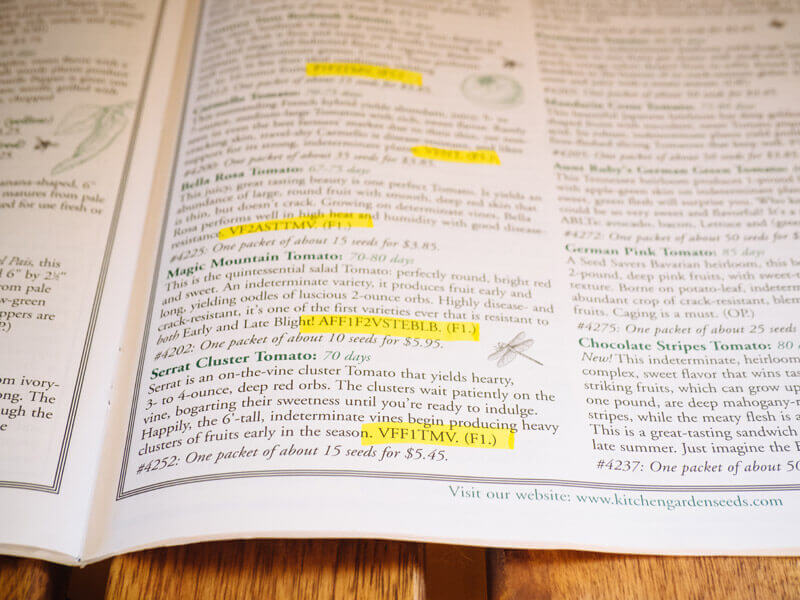
What do all those abbreviations and acronyms in seed catalogs mean?
Most hybrids have been bred to resist diseases that commonly plague the variety. In seed catalogs, such diseases are indicated with cryptic abbreviations and acronyms called plant disease resistance codes (garden speak for “here’s what this plant is protected against”).
Use this handy chart to help you decipher them.
Common seed terminology used in seed catalogs
| Seed Acronym | What It Stands For |
| A | Anthracnose |
| AB | Alternaria (Early) Blight |
| ALS | Angular Leaf Spot |
| AS | Alternaria Stem Canker |
| B | Bacterial Wilt |
| BB | Bacterial Blight |
| BBS | Bacterial Brown Spot |
| BLS | Bacterial Leaf Spot |
| BMV | Bean Mosaic Virus (one or more races) |
| BYMV | Bean Yellow Mosaic Virus |
| CMV | Cucumber Mosaic Virus (“Blight”) |
| CTM | Curly Top Beet Mosaic Virus |
| DM | Downy Mildew (with specific races) |
| E | Enation Mosaic Virus |
| F | Fusarium Wilt (Race 1) |
| F2 | Fusarium Wilt (Races 1 & 2) |
| F3 | Fusarium Wilt (Races 0, 1, & 2) |
| HB | Halo Blight |
| L | Grey Leaf Spot |
| LB | Late Blight |
| LM | Resistant to Leaf Molds A-E |
| LMV | Lettuce Mosaic Virus |
| MNCLB | Moderate Northern Corn Leaf Blight |
| MR | Moderate Common Rust |
| MSCLB | Moderate Southern Corn Leaf Blight |
| MSW | Moderate Stewart’s Wilt |
| MT0-10 | Indicates seeds have been tested for Lettuce Mosaic Virus, and that none was found in a sample of 10,000 seeds or less |
| MT0-30 | Indicates seeds have been tested for Lettuce Mosaic Virus, and that none was found in a sample of 30,000 seeds or less |
| N | Nematodes |
| NCLB | Northern Corn Leaf Blight |
| PLR | Pea Leaf Roll Virus |
| PM | Powdery Mildew |
| PMV | Pepper Mosaic Virus |
| PVY | Potato Virus Y |
| PY | Pythium Resistance |
| R | Common Rust |
| S | Scab |
| SCLB | Southern Corn Leaf Blight |
| SW | Stewart’s Wilt |
| TEV | Tobacco Etch Virus |
| TMV | Tobacco Mosaic Virus |
| TSWV | Tomato Spotted Wilt Virus |
| V | Verticillium Wilt |
| VFN | Resistant to Verticillium Wilt, Fusarium, and Nematodes |
| W | Common Wilt |
| WR | White Rust |
This post updated from an article that originally appeared on January 25, 2017.


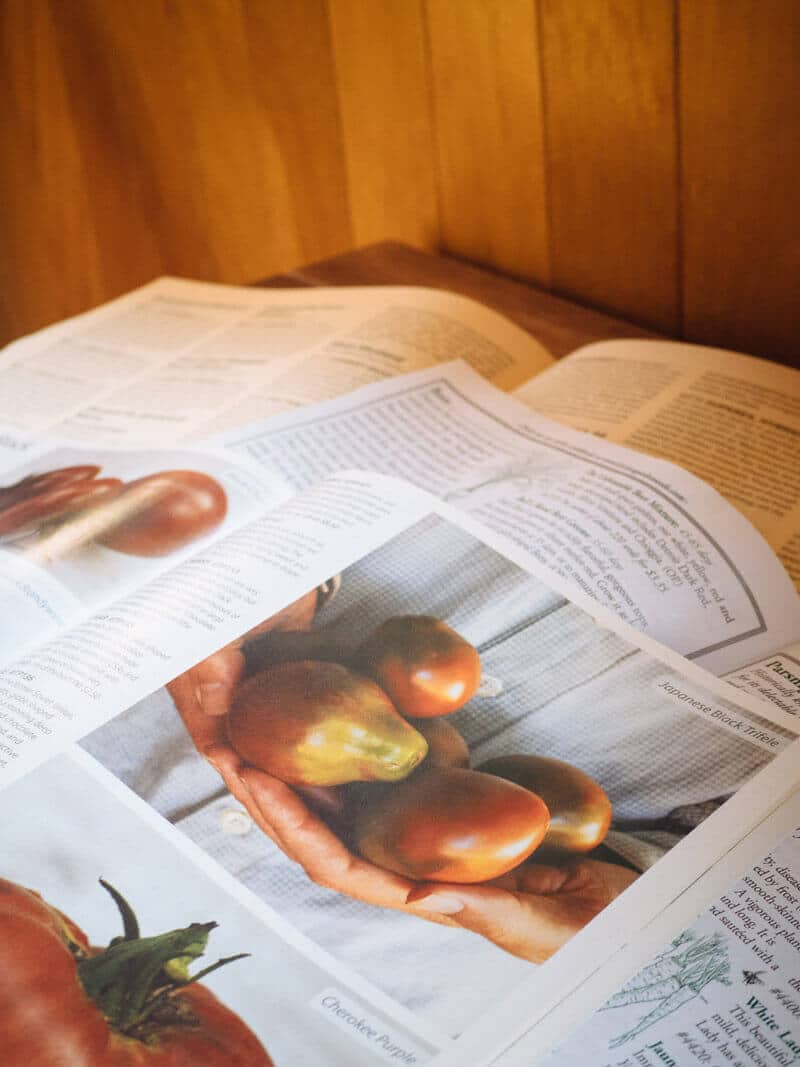
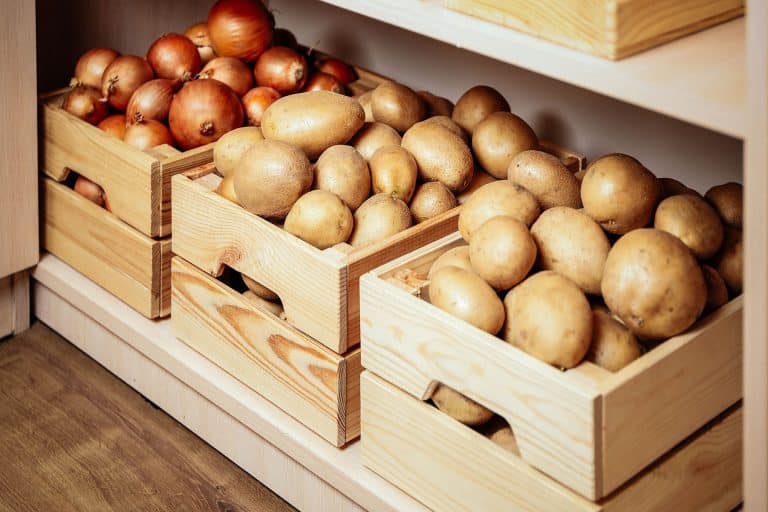

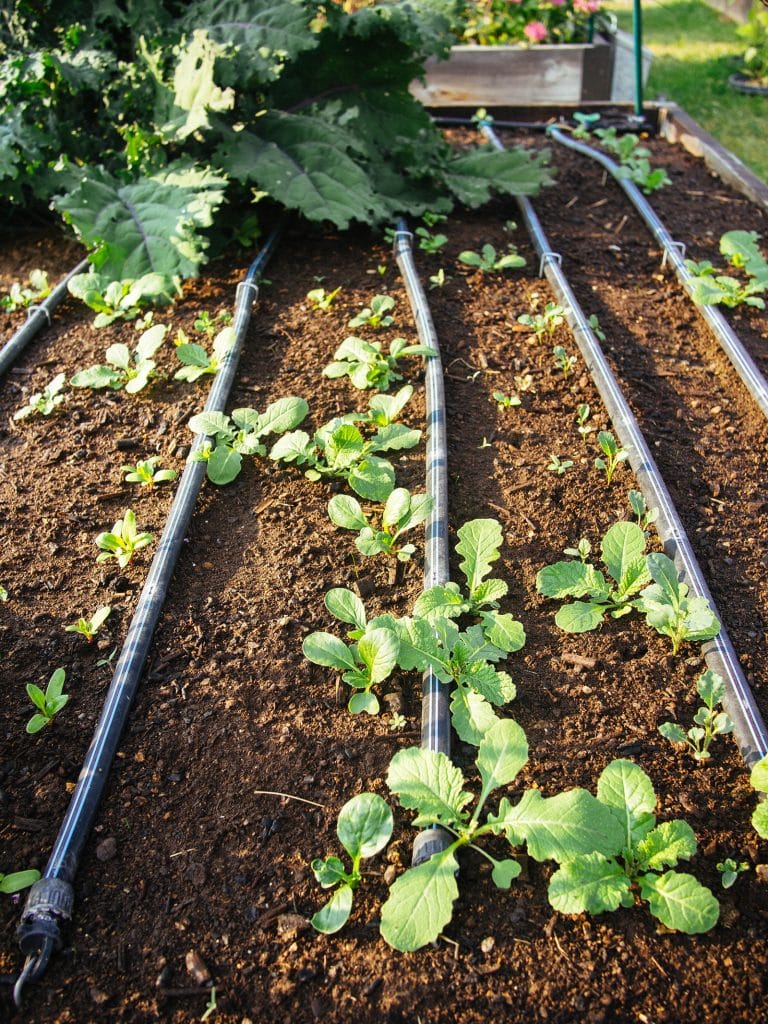
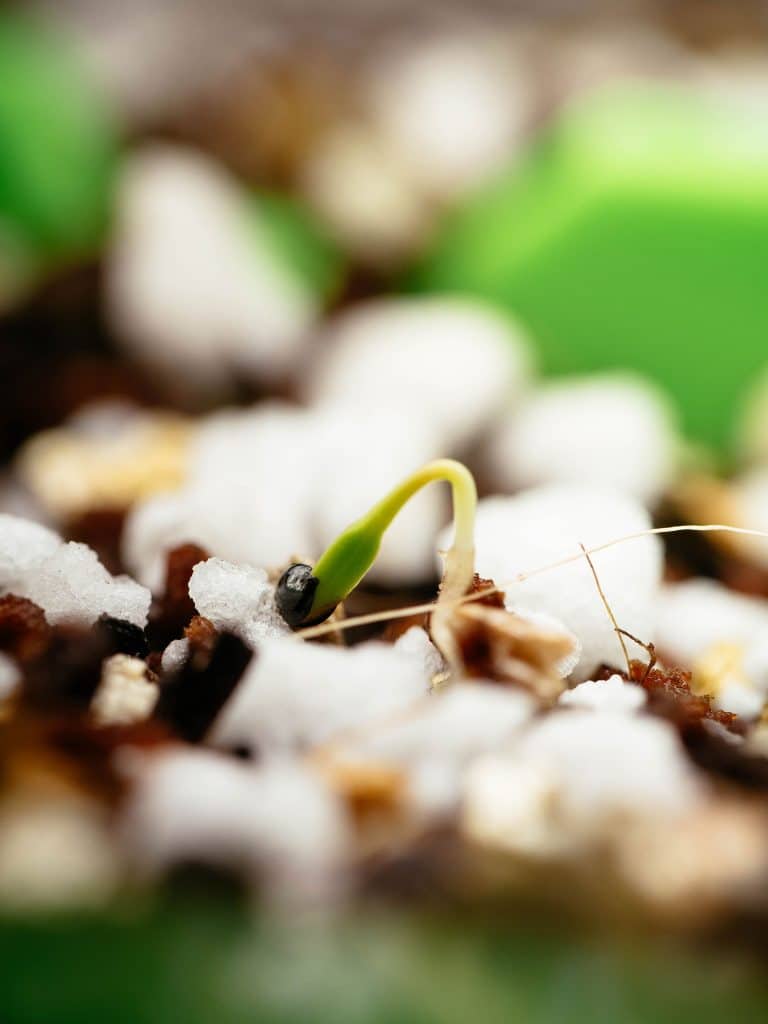









Linda,
Thank you.
You are the 1st comprehensive source I have found with various definitions and abbreviations!
Thanks for the post. Now we can easily choose what seeds to use.
An interesting and informative post. Thanks.
You’re welcome, I’m glad you found it helpful.
Thank you! I am brand new (starting my garden this year). Any catalog suggestions?
My very favorite is Baker Creek Heirloom Seeds! So much to choose from! rareseeds.com
Thank You!!!
You’re welcome!